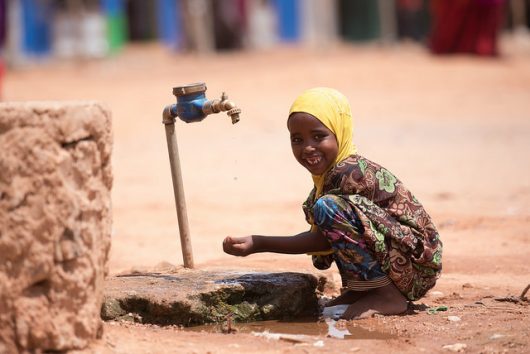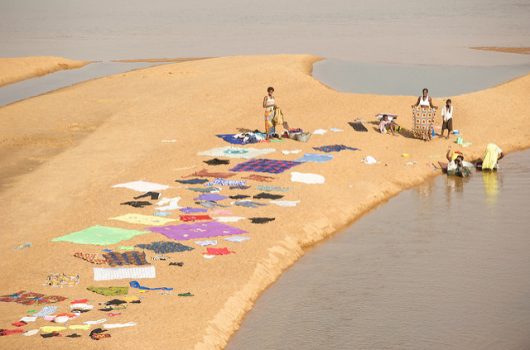 Education remains one of the most influential and longstanding resources in ending global poverty. Higher education institutions are increasingly reaching beyond borders, offering abroad scholarships to students from developing nations. Through study-abroad scholarships, students from developing countries are equipped with the skills and knowledge to address poverty-related issues in their home countries. With more than 700 million people living in extreme poverty globally as of the end of 2020, addressing these issues appears to be imperative.
Education remains one of the most influential and longstanding resources in ending global poverty. Higher education institutions are increasingly reaching beyond borders, offering abroad scholarships to students from developing nations. Through study-abroad scholarships, students from developing countries are equipped with the skills and knowledge to address poverty-related issues in their home countries. With more than 700 million people living in extreme poverty globally as of the end of 2020, addressing these issues appears to be imperative.
Education Endangered
In developing countries like those in sub-Saharan Africa (SSA), tertiary education such as college and university is a privilege, not a right. Furthermore, as of 2020, only 9.4% of secondary education graduates in SSA enrolled in any form of tertiary education. This is almost 30% below the global average and 60% below that of the U.K.
Deprivation of education all too often goes hand in hand with broader poverty. In 2018, an estimated 40% of sub-Saharan Africa’s population lived below the poverty line of $1.90 a day as estimated by the World Bank.
This deficit carries significant repercussions. The tertiary education system primarily generates professionals equipped with the expertise and skills to navigate political, corporate and economic systems effectively.
The absence of these professionals significantly complicates the task of sub-Saharan African nations in constructing a financial and political infrastructure resilient enough to withstand the challenges of the global landscape. Indeed, a 1991 World Bank Report highlighted this as one of the major hurdles facing these nations in their developmental journey. Regrettably, this challenge persists even today.
Saved By the Scholarship
In our increasingly globalized world, prestigious universities worldwide are recognizing exceptional talents that do not need train tickets but air miles to reach their campuses. Academic promise deserving of encouragement and backing blossoms from Kibera, Kenya, to Dharavi, India — the talent that scholarships can nurture to its full potential.
In response to this trend, numerous independent organizations and government-funded educational institutions have introduced scholarships for postgraduate and undergraduate studies, particularly targeting individuals from developing nations. Some of these scholarships encompass comprehensive support, including funding for travel and accommodation.
The Saïd Foundation
One prominent illustration of this trend is the Saïd Foundation, which has been awarding scholarships and educational opportunities for master’s degree programs in the U.K. since 1984. The foundation’s primary mission revolves around fostering the progress of the Middle East by empowering individuals through advanced education at the master’s level.
By affording outstanding individuals from Syria, Jordan, Lebanon, and Palestine the chance to cultivate the skills needed to become pioneers in various fields, ranging from international development to neuroscience, the Saïd Foundation paves the way for these extraordinary individuals to return to their home countries and lead transformative changes.
Saïd Scholars have initiated substantial positive transformations at the very core of social, political and economic structures. For instance, Ambassador Husam Zomlot, who completed a doctorate in International Political Economy from SOAS University of London in 2000 with support from the Saïd Foundation, exemplifies the impact of such scholarships. His LinkedIn profile attests, “The combination of scholarship and practice has given Dr. Zomlot an edge in conducting scholarly and policy-oriented research in the area of international peace and security, with a focus on the Middle East. His work centers on international interventions in conflict and post-conflict zones.”
After founding the Birzeit School of Government, working as an economist with the Palestine Policy Research Institute, and serving as the Strategic Affairs Advisor to the Palestinian President, Zomlot currently holds the position of Head of the Palestinian Mission to the U.K.
Furthermore, in addition to facilitating long-term transformations in developing nations, study-abroad scholarships confer significant benefits upon the countries and institutions that make these scholarships possible. By supporting groundbreaking research and pioneering initiatives aimed at addressing global poverty, guided by individuals who have firsthand experience with this issue, these nations and institutions solidify their status as leaders in both economic and academic development on the global stage.
The Cambridge-Africa Scholarship
The Cambridge-Africa Scholarship has funded a cohort of five African scholars each year since 2014. As with the Saïd Foundation, the focus of the scholarship is to fund those working on projects designed around positive impacts on their home countries. There is also a strong focus on relevance to the U.N. Sustainable Development Goals; 17 goals related to tackling global poverty by 2030.
As such, this study-abroad scholarship has enabled recipients to make research strides in several fields that will positively benefit issues plaguing the African continent. For instance, terrorism and specific diseases.
For example, South-African-born Nikita Hiralal’s contributions to countering Islamic State cyberjihad through a postgraduate thesis as part of the 2020-2021 Cambridge-Africa Scholarship cohort, and Ghanaian Mark Asare Owusu’s research as a 2021-2022 Cambridge-Africa Scholar into the epidemiology and control of meningitis in his home country, speaking to the World Health Organization’s objective to defeat meningitis by 2030.
It appears that these scholarships are only the start of a deeply valuable and widely beneficial dialogue between nations across the globe. This dialogue is the beginning of a conversation that remains expansive and ongoing. A conversation that articulates education as a global institution built on equal access and aspiration, valuing countries not by economic output or political circumstance, but by innovation, ideas and intelligence. And it is study-abroad scholarships that allow such intelligence to make a real difference.
Graduates return to developing countries to tackle issues of poverty, sustainable development and education, inspiring economic and political connections and new markets by enhancing the standing of such nations on the global stage and introducing new ways of solving old problems. As such, scholarships prove an invaluable resource for a better world.
– Izzy Grout
Photo: Unsplash








 Niger is one of the poorest countries in the world, ranked last on UNDP’s 2015 Human Development Index — nearly 20 percent of Nigerien population cannot meet their
Niger is one of the poorest countries in the world, ranked last on UNDP’s 2015 Human Development Index — nearly 20 percent of Nigerien population cannot meet their